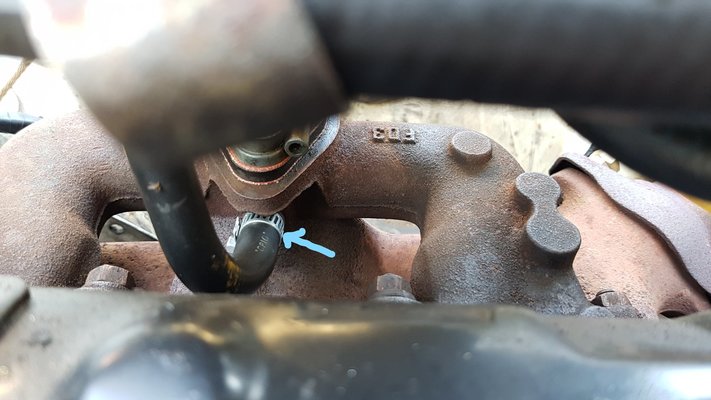There are TWO points to appreciate here:
1/ The points gap. This is the gap between the 2 halves of the points, measured by feeler gauges, at the point when the points are at their maximum opening. If you have a dwell meter, this gap can be more accurately set by using this measure, which is 56 degrees. (Using a dwell meter is time consuming, but more accurate than the feeler gauge method.) The points gap MUST be set first BEFORE setting the timing, as adjusting the gap affects the timing. I can explain how to use a dwell meter if you need it!
2/ The timing point. This is the point at which the points open, and varies, depending on the model. Once you've ascertained where the timing marks for your model are, mark them with a small amount of white paint (Tippex is best) At this stage there are two methods of adjusting the timing;
a/ the static method, which is more easily done with the sparking plugs removed, although it's not essential. You need to line up the two timing marks together and then unscrew the clamp holding the distributor. Using a 5 watt bulb with two wires & clips on the ends, clip one end to the battery earth and the other to the "C.B." or points side of the coil. When the ignition is ON and the points are closed the current will flow from the battery, though the coil to earth through the points. As the points OPEN the current won't be able to run through the points, and so will run through the bulb, lighting it. This is the point we need to find, so switch the ignition on and g-e-n-t-l-y and s-l-o-w-l-y twist the distributor to arrive at the position where the light bulb is j-u-s-t starting to light-this is the point where the points are j-u-s-t starting to open. Tighten the clamp on the distributor body, to hold it in the position, remove the lightbulb & wires, (put the plugs back in if they were removed & reconnect the H.T. leads) and take the car for a run.
b/ the dynamic method involves a strobe light, so I'll wait a bit before explaining it....
Good luck!






 So far, we've discovered that the condenser isn't actually attached to the distributor - it's either come loose or wasn't attached when the distributor was replaced - and we've found another hole in another pipe. Weather permitting these two will be sorted today and then we'll see what happens next. The fuel filter is fine and the floater was checked just the other day - but it was a past problem so you're on the mark, 'angel'. All fingers crossed, and I'll let you know how we get on.
So far, we've discovered that the condenser isn't actually attached to the distributor - it's either come loose or wasn't attached when the distributor was replaced - and we've found another hole in another pipe. Weather permitting these two will be sorted today and then we'll see what happens next. The fuel filter is fine and the floater was checked just the other day - but it was a past problem so you're on the mark, 'angel'. All fingers crossed, and I'll let you know how we get on.